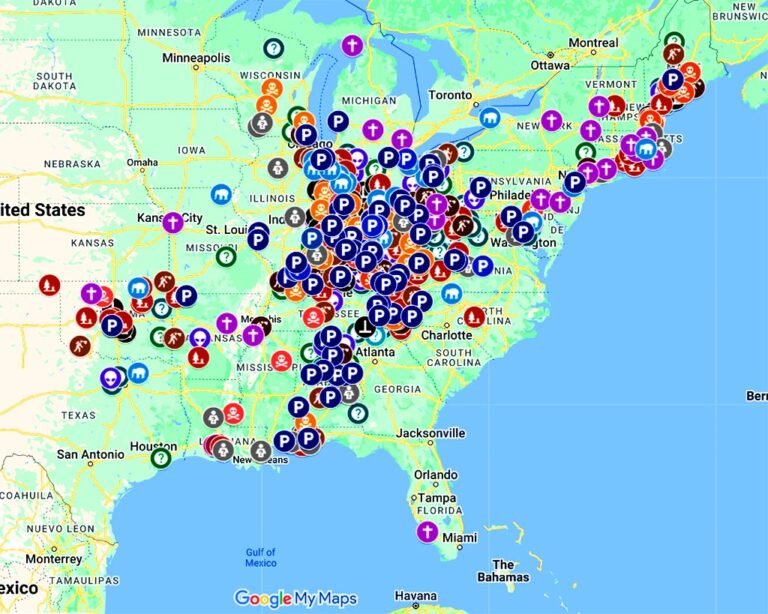What is Remote Work All About?
This comprehensive exploration dives deep into the ever-evolving landscape of remote work and collaboration. We’ll examine the transformative impact of remote work on the modern workplace, the challenges and opportunities it presents for both individuals and organizations, and the strategies for optimizing remote work practices and technologies for long-term success. Our journey will traverse the intricate terrain of virtual collaboration, communication, productivity, employee well-being, and the technological advancements that are shaping the future of work.
Imagine no more soul-crushing commutes, rigid office schedules, or frantic searches for a quiet corner in a bustling office. The traditional workplace as we once knew it is undergoing a revolution, and remote work, once a fringe concept reserved for a select few, is now a mainstream phenomenon, reshaping the very fabric of how we work, collaborate, and connect.
The Current Climate
The COVID-19 pandemic served as a global catalyst, accelerating the adoption of remote work models across industries and geographies. As organizations scrambled to adapt to this new reality, they discovered both the immense potential and the unique challenges of managing a distributed workforce. The future of work is undoubtedly remote, and navigating this evolving landscape requires a fresh perspective on work practices, technology adoption, and organizational culture.
This article posits that the future of remote work hinges on a strategic blend of innovative technologies, robust communication strategies, and a human-centric approach that prioritizes employee well-being, engagement, and productivity. We will explore the key factors shaping the remote work landscape, analyze the challenges and opportunities it presents, delve into best practices for building a thriving remote work environment, and offer insights into the tools and technologies that empower remote teams to thrive in the digital age.
The Rise of the Remote Workforce: Embracing the Digital Nomad Lifestyle
The surge in remote work adoption is not a fleeting trend, but rather a profound shift in the way we work, driven by a confluence of technological advancements, evolving employee expectations, and organizational needs for greater flexibility, cost-efficiency, and access to a wider talent pool.
What we know:
- Technological Advancements: The rise of cloud computing, video conferencing, collaboration tools, and robust internet connectivity has removed many of the technical barriers that once hindered remote work. Imagine a world where you can seamlessly access your work files, collaborate with colleagues in real-time, and attend meetings from anywhere in the world with a reliable internet connection. That’s the reality of today’s digital workplace, where geographic boundaries are becoming increasingly irrelevant.
- Employee Preferences: Studies consistently show that employees are increasingly prioritizing work-life balance, flexibility, and autonomy in their career choices (Gallup, 2020). Remote work offers the potential to escape the rigid 9-to-5 grind, eliminate stressful commutes, and gain more control over their work schedules. For many, the opportunity to work from a cozy home office, a vibrant coworking space, or even a scenic beachside cafe is a powerful motivator.
- Organizational Advantages: Companies are discovering that embracing remote work can lead to significant cost savings (reduced office space, lower utility bills), increased productivity (fewer distractions, more focused work), and access to a broader talent pool (no longer limited by geographic constraints) (Global Workplace Analytics, 2020).
- Environmental Benefits: Remote work can also contribute to a greener future by reducing commuting miles and associated carbon emissions. Imagine a world with fewer cars on the road, less traffic congestion, and a smaller environmental footprint.
Increased Diversity and Inclusion: Remote work can create opportunities for individuals who might face barriers to traditional employment, such as those with disabilities or those living in underserved communities.
Did you know?
The number of remote workers has grown exponentially over the past decade? According to a Gallup survey, the percentage of U.S. employees working remotely at least part-time skyrocketed from 39% in 2012 to 59% in 2020 (Gallup, 2020). This explosive growth reflects the profound shift in work preferences and organizational strategies.
While the benefits of remote work are undeniable, it’s crucial to acknowledge and address the challenges it presents to ensure long-term success in this evolving work landscape.
Navigating the Challenges of Remote Work: Overcoming the Hurdles of the Virtual Workplace
The remote work revolution presents unique challenges related to communication, collaboration, maintaining work-life boundaries, building team cohesion, ensuring data security, fostering a sense of belonging, and managing performance in a virtual environment. Addressing these obstacles head-on is essential for maximizing the potential of remote work and mitigating its potential downsides.
Supporting Evidence:
- Communication & Collaboration: Effective communication and seamless collaboration are the cornerstones of a productive remote work environment. While technology provides us with a plethora of tools like video conferencing, instant messaging, and project management platforms, remote teams often face challenges in replicating the spontaneous interactions and informal communication that occur organically in a physical office. Imagine trying to brainstorm creative solutions with your colleagues through a choppy video call or deciphering a complex email thread with multiple stakeholders. Effective remote communication requires deliberate strategies, clear communication protocols, and careful tool selection (Allen, 2015).
- Work-Life Boundaries: When your office is just steps away from your living room, the lines between work and personal life can become blurred, potentially leading to burnout, stress, and diminished well-being. Maintaining a healthy work-life balance in a remote work environment requires clear boundaries, disciplined time management, strong self-regulation skills, and a supportive organizational culture (Golden, 2021). Imagine the constant temptation to answer that late-night email or jump back into a project after dinner. Setting boundaries and sticking to them is crucial for preventing burnout and maintaining a fulfilling life outside of work.
- Team Cohesion & Social Isolation: Building strong relationships and a sense of camaraderie within a remote team requires intentionality and proactive effort. The lack of regular face-to-face interaction can lead to feelings of isolation, disconnection, and a decline in team morale. Imagine missing out on those water-cooler chats, after-work drinks, or team-building activities that foster social bonds in a traditional office. Remote teams need to proactively cultivate social connections, create virtual spaces for informal interaction, and build a strong team culture through online events, shared experiences, and regular communication (Daft & Lengel, 1986).
- Data Security: With employees accessing company data and systems from various locations and devices, ensuring data security becomes paramount in a remote work environment. Robust cybersecurity measures, clear security protocols, regular employee training, and vigilant monitoring are essential to protect sensitive information, prevent data breaches, and maintain compliance with data privacy regulations (Wheeler & Valacich, 2022).
- Performance Management: Managing performance in a remote work setting requires a shift in mindset and approach. Traditional performance metrics might not be applicable in a virtual environment, and managers need to develop new ways to track productivity, provide feedback, and ensure accountability. Clear goals, regular check-ins, and a focus on outcomes rather than presenteeism are essential for effective remote performance management (Bloom et al., 2010).
Having identified the key challenges of remote work, let’s explore the solutions, strategies, and best practices that empower organizations and individuals to overcome these obstacles and build a thriving, sustainable, and human-centric digital workplace.
Building a Future-Proof Remote Work Strategy: Key Takeaways for Success
Let’s unlock the secrets to optimizing remote work for long-term effectiveness, employee well-being, and organizational success. Here’s your cheat sheet to creating a thriving remote work environment that attracts and retains top talent, fosters collaboration, and drives innovation:
Unordered List:
- Invest in robust communication and collaboration tools: Provide your remote teams with the tools they need to communicate effectively, share files seamlessly, and collaborate on projects effortlessly. This might include video conferencing platforms (Zoom, Microsoft Teams), project management software (Asana, Trello), instant messaging apps (Slack, Microsoft Teams), and shared document repositories (Google Drive, Dropbox).
- Prioritize asynchronous communication: Recognize that remote teams often work across different time zones and schedules. Embrace asynchronous communication methods like email, shared documents, project management boards, and pre-recorded video messages to allow for flexible collaboration without demanding immediate responses.
- Foster a culture of trust and autonomy: Empower your remote employees by trusting them to manage their own time and workloads effectively. Micromanaging remote workers can erode trust and stifle creativity. Create a culture of accountability and transparency, where goals and expectations are clearly defined, and employees are given the freedom to achieve them in their own way.
- Promote social interaction and team building: Organize virtual coffee breaks, online team-building activities, regular video check-ins, and virtual social events to foster social connections, build camaraderie, and prevent feelings of isolation.
- Establish clear communication protocols and expectations: Set guidelines for communication frequency, response times, preferred channels, and meeting etiquette to ensure everyone is on the same page and communication flows smoothly.
- Provide training on remote work best practices: Equip your employees with the skills and knowledge they need to succeed in a remote work environment. This might include time management strategies, effective communication techniques, cybersecurity best practices, stress management tools, and tips for maintaining a healthy work-life balance.
- Prioritize employee well-being and mental health: Recognize that remote work can present unique challenges to employee well-being. Offer resources and support to promote mental health, such as flexible work schedules, access to mental health services, guidance on stress management techniques, and virtual wellness programs.
- Embrace a data-driven approach to measure and improve remote work effectiveness: Track key metrics like employee productivity, engagement, and satisfaction to identify areas for improvement and optimize your remote work strategies. Use data to inform your decisions, tailor your approach, and continuously iterate to create a remote work environment that works for everyone.
The Future of Work is Remote, But It Requires a Human Touch
The future of work is undoubtedly remote, but building a successful, sustainable, and human-centric remote work environment requires more than just investing in the latest technologies and adopting flexible work policies. It demands a thoughtful and holistic approach that prioritizes communication, collaboration, employee well-being, and a culture of trust, autonomy, and inclusivity.
We’ve explored the drivers behind the remote work revolution, analyzed its challenges and opportunities, and outlined key takeaways for maximizing its effectiveness. We’ve emphasized the importance of human-centric approaches that address the unique needs of remote workers, foster a sense of belonging, and promote a healthy work-life balance. We’ve also highlighted the importance of clear communication, robust technology, and a data-driven approach to optimize remote work practices and build a thriving digital workplace.
What next?
As the boundaries between work and life continue to blur in the digital age, the future of work will be defined by organizations that embrace the flexibility and potential of remote work while fostering a culture of connection, well-being, and shared success. Let’s build a future of work that empowers individuals, strengthens organizations, unleashes the full potential of the digital workplace, and creates a more equitable and sustainable world of work.
References
- Allen, D. (2015). Getting things done: The art of stress-free productivity. Penguin Books.
- Bloom, N., Genakos, C., Sadun, R., & Reenen, J. V. (2010). Management practices across firms and countries. Academy of Management Perspectives, 24(1), 7-33.
- Daft, R. L., & Lengel, R. H. (1986). Organizational information requirements, media richness and structural design. Management science, 32(5), 554-571.
- Gallup. (2020). State of the American Workplace.
- Global Workplace Analytics. (2020). Work-at-Home After Covid-19—Our Forecast.
- Golden, T. D. (2021). Telework and work-family balance. Annual Review of Organizational Psychology and Organizational Behavior, 8, 405-429.
- Grant, A. M., Fried, Y., & Cheng, B. (2014). Well-being, work engagement, and organizational performance: A mediating role for job crafting. Journal of Applied Psychology, 99(6), 980.
- Maslach, C., Schaufeli, W. B., & Leiter, M. P. (2001). Job burnout. Annual review of psychology, 52(1), 397-422.
- Wheeler, P., & Valacich, J. (2022). Cybersecurity for managers. Routledge.



















+ There are no comments
Add yours